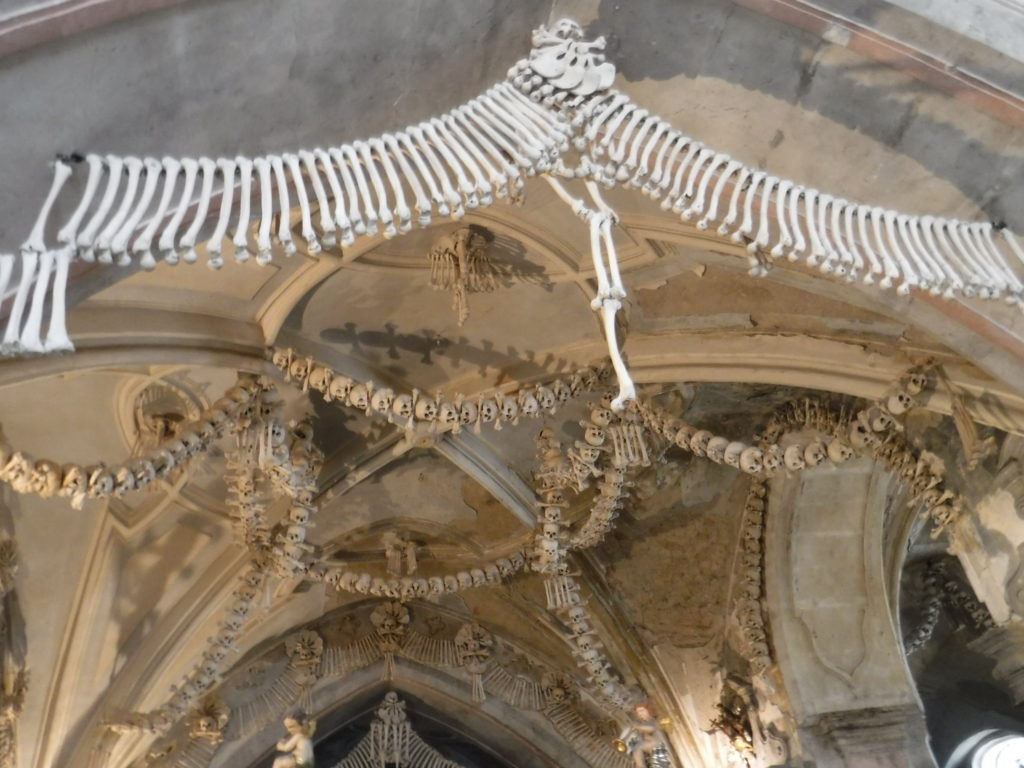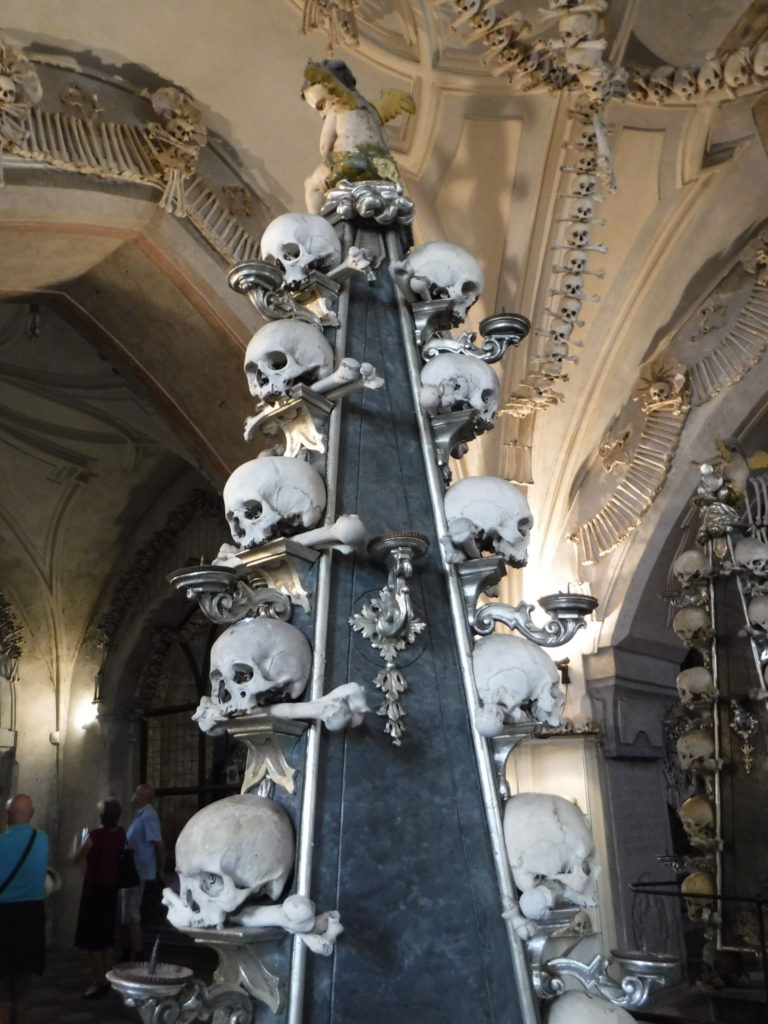I began my day with a stroll back to my car through Plzen’s historic downtown, stopping at a bakery for an espresso and an open-faced sandwich. I asked one of the girls how to say ‘thank you’ in Czech. “Děkuji” (sounds like yah-koy-oh to my untrained ear).
The Czech countryside is beautiful, and my trip took me on a winding tour through two-lane (one each way) roads and tiny villages. I am so thankful for the experience — the long wait times through construction zones didn’t bother me in the slightest (I also have my girlfriend Aimee’s playlists to thank for that). Many towns are within walking distance from each other, and each one features a beautiful church, often along with another historical site such as a monastery or fortress.
My destination was the Sedlec Ossuary, but I wound up discovering quite a bit more of interest in the tiny (20k pop.) city of Kutná Hora than I expected, which brought me to Brno later than my original plan. I was happy to experience the diversion.
As the history goes, an abbot from the Cistercian monastery in Sedlec (walking distance to Kutná Hora) brought back soil from Golgotha to the abbey’s cemetery, and it rapidly became a desirable burial spot. The number of bones at the site became quite remarkable after the plagues of the 14th century, followed by the 15th century Hussite Wars (a Bohemian rebellion against the Catholic church). It is estimated that between 40 and 70 thousand people’s bones are contained within the ossuary. A half-blind monk was tasked with exhuming and stacking the bones. Legend claims he regained his sight once he had completed the work.

H.R. Giger would have loved this place
While it could be considered morbid, the inspiration for stacking the bones is actually theological: “all are equal in the sight of God”. Worship and faith, I am reminded, are often about the idea of transcending death. While the ossuary for me was more of a history lesson, I was still compelled to use the font and light a candle. My Catholic habits live on, it seems.

Whole lotta bones


The House of Schwarzenburg coat of arms, made from the dead
From the ossuary, I happened upon a Philip Morris factory, complete with an interesting (and free) museum exhibit.

Tobacco as it was used in the 1920s
After exiting the museum, a young down-on-his luck Czech man asked to use my phone. For the price of a beer, he offered to walk me to the historic downtown centre. I took him up on his offer and wound up discovering the wealth of visual and historical wonders that Kutná Hora had to offer. Two woundrous cathedrals and a Jesuit university later, my camera’s battery finally called it a day.
Downtown Kutná Hora had a different feel to it than Plzeň, mainly due to the fact that the original site of Plzeň is about 10km away from today’s Baroque-style “downtown Plzeň”. Kutná Hora featured winding, narrow, sloping cobblestone streets and a ridiculously skewed tourist-to-local ratio.

The view from the Church of St. Barbara

Downtown Kutna Hora
The cathedrals were breathtaking (I’m sure I will stop saying that after the 5th one I visit). The first one I entered was Kostel sv. Jakuba (Cathedral of St. Jacob), a by-donation lookie-lew which, while it was less outwardly impressive as the stately Gothic wonder that is the Chrám Sv. Barbory (Church of St. Barbara), still had a lot to offer:

Jesus and apostles carved in wood



The Church of St. Barbara, however, was even more of a sight to behold. Built on money that came from Kutná Hora’s lucrative silver mine, it was definitely worth the price of entry and my guide Matěj’s beer.

The church from afar, with the Jesuit college on the right


Czech lands in winter


A middle-eastern themed mural
Meals today were both “traditional” fare – a Bohemian medley of beef, sausage, pickled cabbage and dumplings, and a Moravian dish of braised beef in a cranberry gravy with soft bread on the side. Pilsner on the side.
Tomorrow: Brno and the groundbreaking work of Gregor Mendel.
Overwhelmingly beautiful. The stacked bones cathedral is beyond words!
Amazing photos and words, James! Thank you for sharing with us!